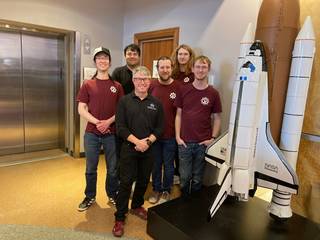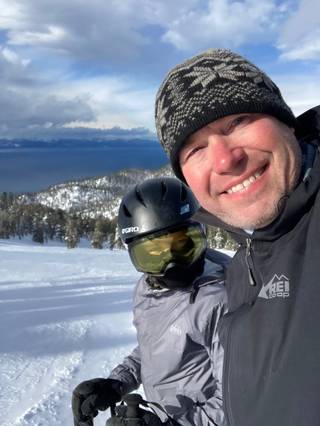Todd Ensign: ERC Program Manager
What is your current role/position and how long have you been at IV&V?
I’m currently the Program Manager of the Education Resource Center (ERC), but I started as an Education Specialist back in 2005. I also serve as the IV&V liaison to NASA’s Robotics Alliance Project. In this role, I get to collaborate with folks from across the agency who are implementing competitive robotics programs near their centers.
How did you come to be at IV&V?
Prior to my position with the ERC, I worked for a non-profit organization that partnered with the ERC on several competitive grants to implement NASA’s GLOBE Program. When past Program Manager Karen Davis was stepping down to raise her twins, she suggested I apply… and the rest is history!
What is a typical workday like for you?
When I began working for the ERC there were only two of us, and I spent most of my time developing materials, assembling classroom kits, and delivering workshops to teachers. Today, I am managing an amazing team that includes three full-time outreach specialists, and up to four interns and three AmeriCorps members! I find I spend more time on logistics, planning, and fiscal management when I am not out running robot tournaments across the state, or training educators on one of our Loan and Learn kits.
What’s your favorite part of your job?
I absolutely love the ability to bring new programs such as the Aerial Drone Competition, new resources like our rocketry kit, and new opportunities including Destination SPACE Camp to the students of West Virginia. In a funny way, I was once called the “Easter Bunny” of STEM education, but on a more serious note, I view what I do as workforce development for NASA and future STEM based organizations. Helping West Virginial kids, especially those who are often overlooked or underrepresented, realize they are extremely capable of competing with their peers of any state or country in all areas of STEM brings me the most joy.
What is your educational background and what influenced you to choose it?
I hold an A.A. in Social Science from Brookdale Community College in Lincroft, N.J., a B.S.Ed. in Earth Science Education and a M.Ed. in Educational Technology from Northern Arizona University (NAU) in Flagstaff, Ariz., and an Ed.D. in Curriculum and Instruction from WVU with a focus on educational robotics. I went into the field of STEM education because it blended my love for skills with technology, my interest in science, and my need to share how the world around us works with youth (or anyone who will listen to me to be honest).
Who or what has shaped you personally or professionally?
I feel my ability to handle logistics of programs and events began back in my Scouting days when I was Senior Patrol Leader. My passion for teaching and working with youth came out in my first career as an outdoor experiential educator for the Monmouth County Park System where I taught kayaking, rock climbing, and caving to name a few activities to youth and adults. During my time at NAU, I shifted from science education to educator professional development while working for the Arizona K-12 Center on the Bill and Melinda Gates Leadership Institutes for Technology grant. There, I had the opportunity to train principals and superintendents on how to use technology to make data-driven decisions. When I moved to West Virginia, I found more opportunities training adults than working in a classroom. There were many influential professors who helped shape my career path, but it was Dr. Dan MacIsaac who hired me as an undergraduate to work on several federal Department of Education grants. That is what led me toward STEM professional development.
What advice would you have for anyone wanting to work for NASA?
Given my role in the community at events, tournaments, and workshops, I am often asked how someone gets a job at NASA. My reply is founded on my personal and professional friendships across numerous federal agencies: Do an internship! I also emphasize to folks that I am a geology teacher, not a “NASA engineer” and the agency needs people with a wide range of skills and degrees: Electricians and machinists, educators and accountants, communication specialists, and of course scientists and engineers. I also suggest there is a growing recognition among employers and post-secondary institutions of the relationship between participation in STEM competitions — such as the robotics programs — and student success. I recommend students join or start a team as early as they can.
What’s your first memory of NASA?
I went to school during the hey-day of STS and remember watching shuttle launches at school and building every 80s LEGO space kit. I was so into NASA that my nickname was quite literally, “Space Cadet.” It is with some irony that this “Space Cadet” now teaches LEGO robotics and works at the IV&V Program, which was founded as a direct result of the NRC report on the lessons learned from Challenger. Growing up, I can also specifically recall the Challenger disaster and the collective sadness of a nation in mourning.
What do you like to do outside of work? Any hobbies or activities?
When not working on ERC projects I like to spend as much time as I can with my son, Ian. That time is spent ideally outside backcountry skiing, mountain biking, whitewater paddling, rock- or ice-climbing, or even just attending bluegrass concerts. I still love helping build LEGO space themed ships. . . my most recent was the X-Wing fighter.




























